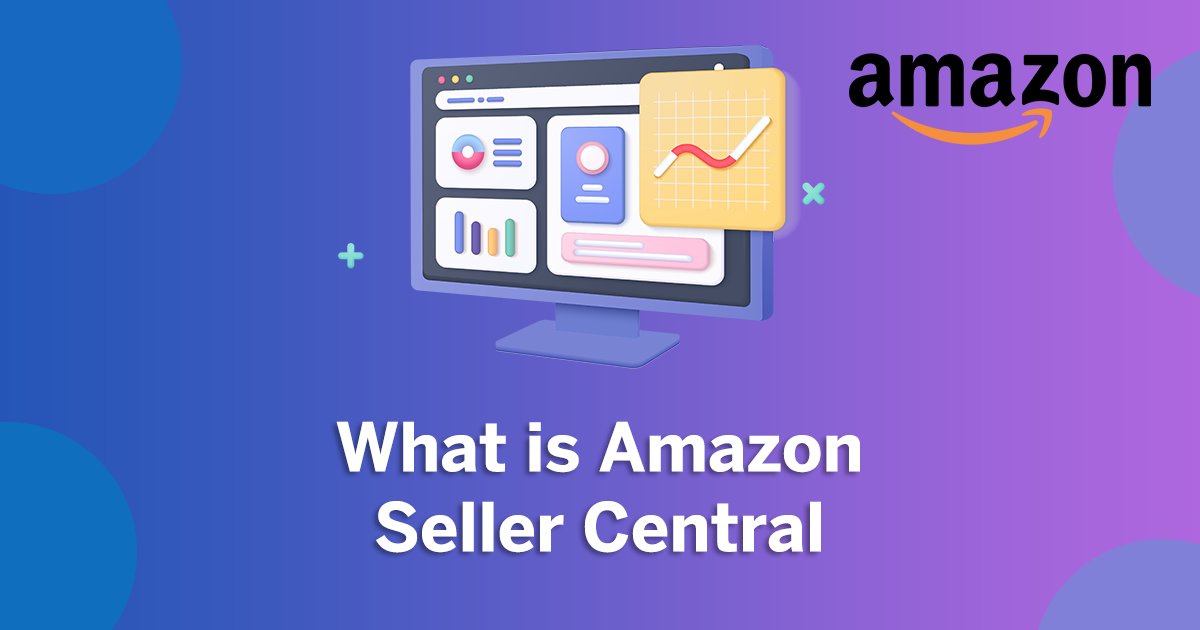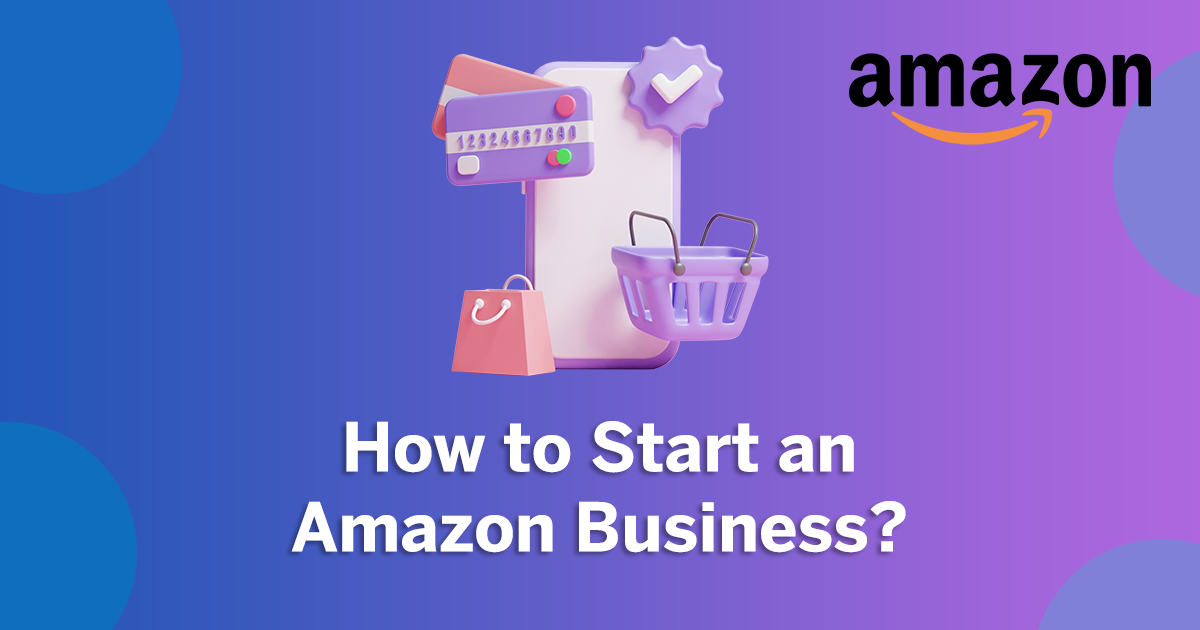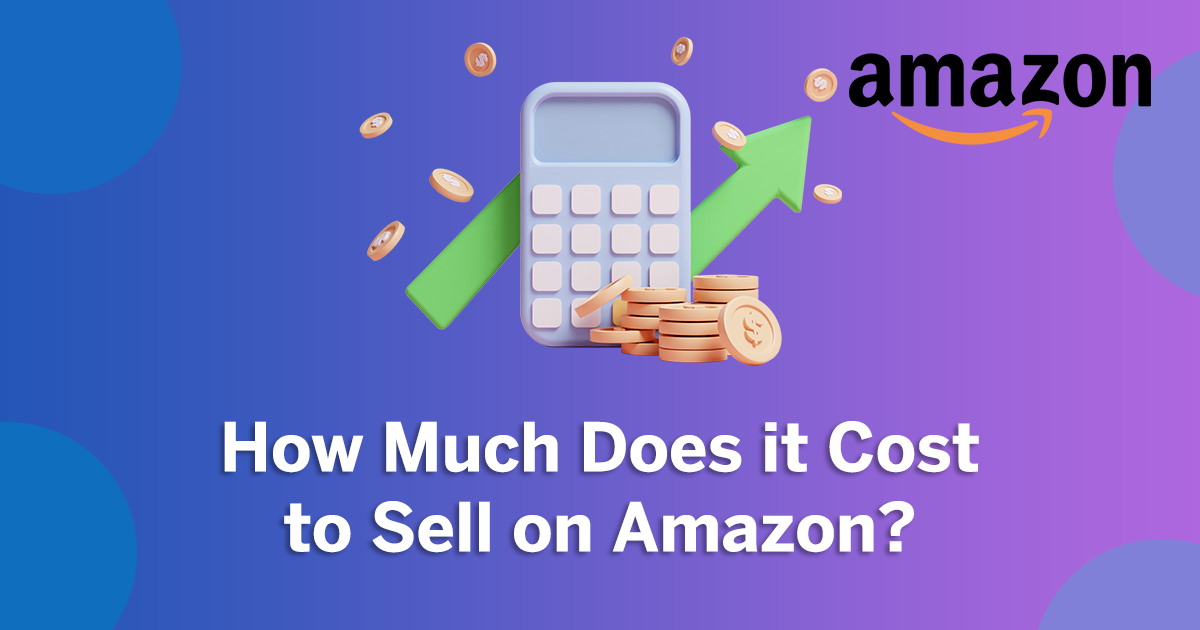How to Create an Amazon Seller Account in 2024
So, you want to start an Amazon business and create your side hustle?
Amazon is getting bigger day by day, and so are your chances of running a successful e-commerce business.
The first thing you need to do is set up your Amazon Seller Account. With your Seller Account ready, you can start to make money on Amazon and grow your business.

Imagine: You earn the extra income you’ve always wanted. If things go really well, you may even let go of your boring 9-5 job!
Learn how to create a new Amazon Seller Account with our step-by-step guide. Whether you aim for passive income or want to manage a full-time Amazon business, our guide will show you how to register to sell on Amazon.
What is Amazon Seller Central?

Amazon Seller Central is your go-to place for managing your Amazon Seller Account. Here, you handle sales, orders, and inventory for your business. You can also use Seller Central to check payment reports, talk to buyers, and more.
It offers essential tools and features for your business. You'll find tools for advertising, running promotions, analyzing data, and using FBA (Fulfillment by Amazon) here.
Once you set up your Seller Central account, you get full access to manage your growing e-commerce business from your phone or the Amazon Seller Central website.
Another key point is that Amazon Seller Central sends you important alerts. These help you stay updated on your orders, pending payments, any urgent business matters, and more. Essentially, this site/app acts as a control panel for your Amazon business.
How to Start an Amazon Business

What’s great about Amazon is that there isn’t just one way to start an Amazon business. You can choose different business models and products to sell, offering many paths to success on the platform.
Yet, the steps to start and operate on Amazon remain the same, no matter your business model or product choice.
1. Choose a Selling Plan
Why do you want to create an Amazon account? What do you want to get out of starting your Amazon business? Extra income? Or a new, independent source of income? Do you know what you’re going to sell? How much are you going to invest in your new business?
These are all questions you need to ask yourself as a new seller on Amazon.
You can choose between the available seller plans:
- Individual Plan: This is ideal for someone new to e-commerce. In other words, you’re planning to sell 40 items or less per month. You won’t get access to advanced selling tools, but you won’t need them at this level until you are ready to scale your business. Amazon takes $0.99 per sale.
- Professional Plan: This plan is ideal for someone who’s experienced with e-commerce and knows exactly what they’re aiming to get out of their Amazon business.
You’ll get access to pro tools like personas given by APIs, fully developed sales reports, inventory management tools, and much more. Amazon charges you a flat $39.99 per month regardless of your sales.
2. Determine a Business Model
You can sell many products on Amazon, and different business models suit different products. It's important to know what you want to sell and the best model for it.Amazon has several business models:
- Retail Arbitrage: You buy products at a low price and sell them at a higher price. This involves finding deals in stores or malls and selling them for a profit.
- Online Arbitrage: Similar to retail arbitrage, but you find and buy products online instead of in physical stores.
- Wholesale: You purchase large quantities of products directly from the manufacturer. This costs more than arbitrage but can lead to bigger sales.
- Private Label: You buy products without a brand from a manufacturer, then sell them under your own brand. If you choose a private label business model, you need to have a good amount of inventory and more sales skills.
- Dropshipping: You list a product for sale, and when it sells, the manufacturer ships it directly to the customer. You don't keep inventory.
- Handmade: You sell products you make yourself, similar to selling on Etsy. If you choose this model, you’ll need solid marketing skills and the ability to create products people want to buy. It's the least common model on Amazon.
3. Pick a Fulfillment Method
Amazon has three main ways to send items to customers after they're sold. The first way is Fulfillment By Amazon (FBA). This is good for sellers who don't have space to store their items and decide to rely on an Amazon warehouse. Also, when you use FBA, Amazon will automatically make your products eligible for Prime shipping.
But remember, your packages won't show your name or branding, and Amazon might charge high fees for storing your items.
The second way is Fulfilled By Merchant (FBM). This is for sellers who want to handle shipping themselves, customize their packaging, and have space for their items. It might save you money, but the shipping management will take you a lot of time.
The last method is Seller Fulfilled Prime, which works with a third-party fulfillment partner. This lets you ship items yourself, still offer Prime shipping, and customize your packages.
| FBA Fulfilled by Amazon |
FBM Fulfilled by Merchant |
3PF Third-party fulfillment partner |
|
| OVERVIEW | Suitable if you’re unable to manage space for your inventory, or shipping of your products. | Suitable if you’re able to manage space for your inventory and the shipping of products. | Utilizing a third-party solution that meets Amazon’s strict standards. |
| PRIME SHIPPING & CUSTOMIZATION | Automatically eligible, but you won’t be able to customize your package. | Not eligible, but you’re free to customize your packages. | Eligible, you’ll also be free to customize your packages. |
| COST | Can be a costly option for holding your inventory. | The most cost-effective solution out of the 3 mentioned, but would also require a considerable time investment. |
Can be more cost-effective than using FBA without the headaches of using FBM. |
4. Choose Products to Sell
You must choose your products carefully. Consider factors like cost, quality, durability, profitability, whether they are seasonal, and who else is selling something similar.
There are lots of ways to pick your products. Amazon and other third parties provide software that helps you find a product to sell or validate that the product you want to sell is a good seller.
Additionally, when you pick products to sell, you must know tips for pricing Amazon products, such as performing competitor analysis.
5. Create an Amazon Seller Account
Once you choose your Amazon selling plan, it's time for the Amazon seller registration process.Follow these easy steps to make your Amazon Seller Account:
- Visit the site: Go to the page https://sell.amazon.com. Here, you will choose between starting with a basic account or opting to upgrade to a professional account right away, depending on your business type and scale. Amazon gives you the flexibility to start small and scale up as your business grows.
- Click the orange “Learn more” button: On the site, hit the bright orange “Learn more” button. You'll see a form to fill in with your details.
You might get an Amazon account representative based on your account type and seller plan. This personalized support can be invaluable for new sellers, especially regarding Amazon advertising. After submitting, you'll see a confirmation page.
- Wait for an email from Amazon: You can wait for an email from Amazon with the next steps or sign up right away to start selling.
- Know about fees: The professional account costs $39.99 a month at first. If you don't list anything for a few months, you won't be charged, which is great for seasonal sellers. Remember, you can switch to an individual seller account anytime.
- Make your account: Choose a professional or individual account, then enter your email and password. You'll get a verification code by email.
- Add business information: You'll need to say where your business is and what type it is (like privately owned, which is most common for Amazon sellers).
- Add personal info: Give your full name and click “Agree and continue” to move on.
- Enter billing details: You'll need to give a bank account statement and a credit card number.
- List your products: Add your products' details to your Amazon store, including the store name, UPCs, and if you're the manufacturer.
- Verify your account: The last step is to verify your account with pictures of your ID and a bank statement.
6. Make Your Listing Stand Out
The page where customers see your products is crucial for your business's success. Don’t worry if you struggle with setting up a product listing; an Amazon Seller Account lets you tweak and improve your listings for the best results. Make your listing better with these key tips:- Title: Keep your product title under 200 characters and capitalize each word to grab both shoppers' and Amazon's attention.
- Images: The first thing buyers often notice are the images. Make sure your product photos are 500x500 or 1,000x1,000 pixels to enhance your listing's appeal.
- Variations: Offer variations like different colors, scents, or sizes to appeal to a broader range of customers, depending on your product category.
- Bullet Points: Use bullet points to give clear, concise details about your product's key features and benefits.
- Featured Offer 'Buy Box': This special spot on the product page makes it easy for customers to add your product to their cart or buy it immediately.
- Other Offers: Below your listing, you'll find a section for 'Other offers' where different sellers may list the same product, possibly with variations in price or shipping options.
- Description: Use the product description to include more keywords that didn't fit in your bullet points. A description rich in keywords helps customers find your product more easily.
How Much Does it Cost to Sell on Amazon?

You can start selling on Amazon for free, which is great news.
But, if you choose to sell your brand (private label), you'll need to buy your products before selling them at a higher price. This might sound costly, but it can be affordable.
Also, no matter how you decide to fulfill orders, there will be some fees for your seller account.
What fees does Amazon charge? Here's a quick look:
- Amazon referral fees: Amazon will charge you this as a commission for selling on their site. It changes by category but is usually between 12-40%, with most products having a 15% fee.
- Individual seller fee: If you're not on a professional plan, you pay an extra $0.99 for each sale.
- FBA fees: When you use Amazon's FBA service you pay for shipping and handling by Amazon.
- Other fees: There might be extra costs for storing inventory for a long time with FBA, fees for selling media items like books or DVDs, and advertising costs.
Benefits of Selling on Amazon Prime
Your product can qualify for Amazon Prime if you use Amazon FBA and have enough inventory. If you sell on Prime, your product gets to customers in 2-3 days, which is a great way to boost your success on Amazon.
When you are a Prime seller, you get an “Amazon Prime” badge on your listing. This is great because customers love fast shipping, and it can help your product sell better.
But, if you're using Amazon FBM, you can still sell via Prime by joining Amazon’s Seller Fulfilled Prime program.
Start Selling on Amazon
Now that you know the steps to become an Amazon seller, you can set up your shop, fill your inventory, and start making the income you’ve always desired. At Seller Candy, we have tools and resources that can help you fully optimize your product listings to generate more sales and boost your profits.
If you have any questions or want to know more about how to create an Amazon seller account or how to start an Amazon business, please feel free to contact us today.

